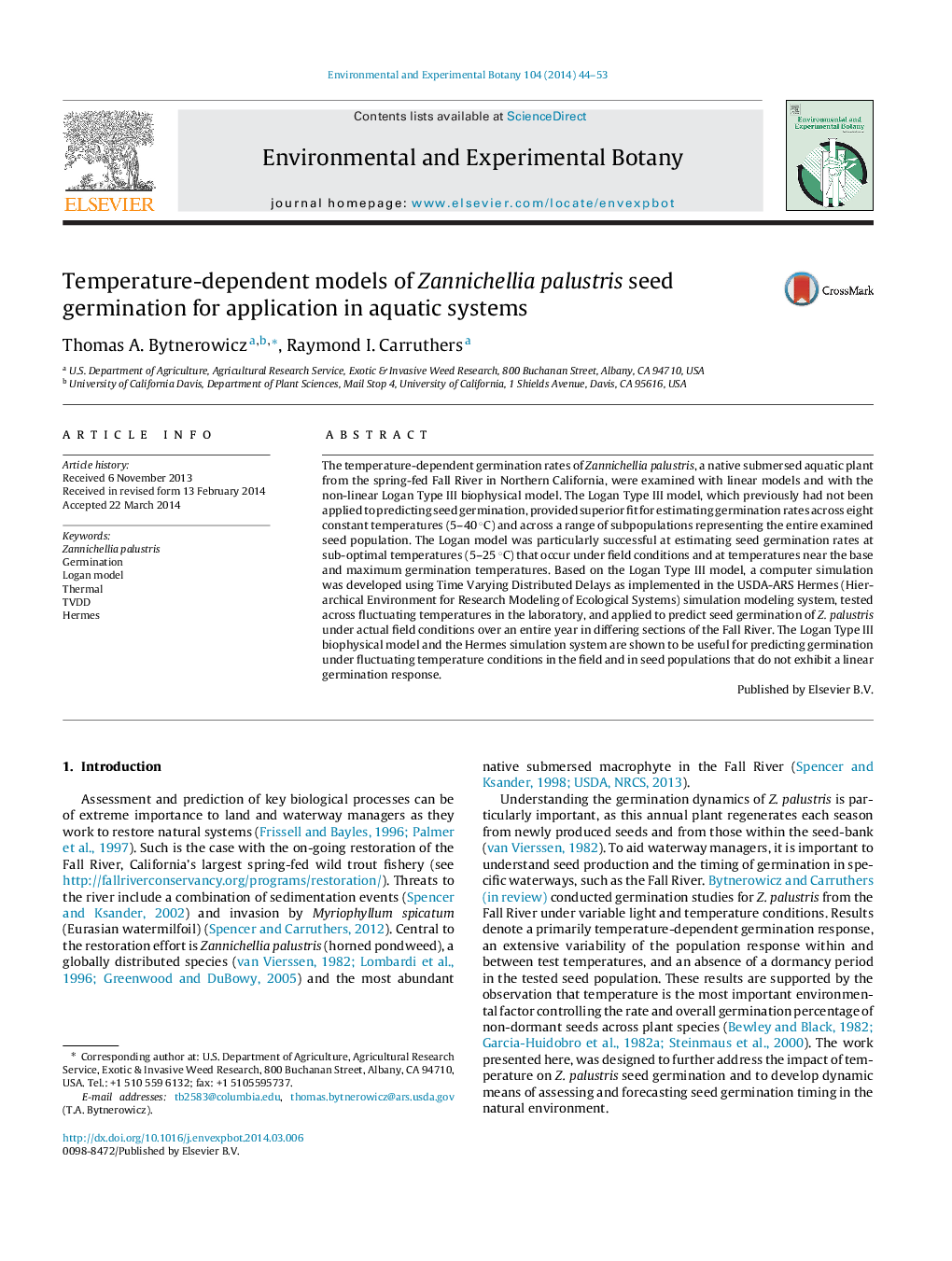| Article ID | Journal | Published Year | Pages | File Type |
|---|---|---|---|---|
| 4554427 | Environmental and Experimental Botany | 2014 | 10 Pages |
•Thermal models were evaluated to describe Zannichellia palustris germination rates.•The study on Z. palustris, a native macrophyte, was tailored to conditions in a CA spring fed river.•The Logan Type III model provided optimal fit relative to classic linear models.•The Logan model was applied to predict germination under actual field conditions.
The temperature-dependent germination rates of Zannichellia palustris, a native submersed aquatic plant from the spring-fed Fall River in Northern California, were examined with linear models and with the non-linear Logan Type III biophysical model. The Logan Type III model, which previously had not been applied to predicting seed germination, provided superior fit for estimating germination rates across eight constant temperatures (5–40 °C) and across a range of subpopulations representing the entire examined seed population. The Logan model was particularly successful at estimating seed germination rates at sub-optimal temperatures (5–25 °C) that occur under field conditions and at temperatures near the base and maximum germination temperatures. Based on the Logan Type III model, a computer simulation was developed using Time Varying Distributed Delays as implemented in the USDA-ARS Hermes (Hierarchical Environment for Research Modeling of Ecological Systems) simulation modeling system, tested across fluctuating temperatures in the laboratory, and applied to predict seed germination of Z. palustris under actual field conditions over an entire year in differing sections of the Fall River. The Logan Type III biophysical model and the Hermes simulation system are shown to be useful for predicting germination under fluctuating temperature conditions in the field and in seed populations that do not exhibit a linear germination response.
